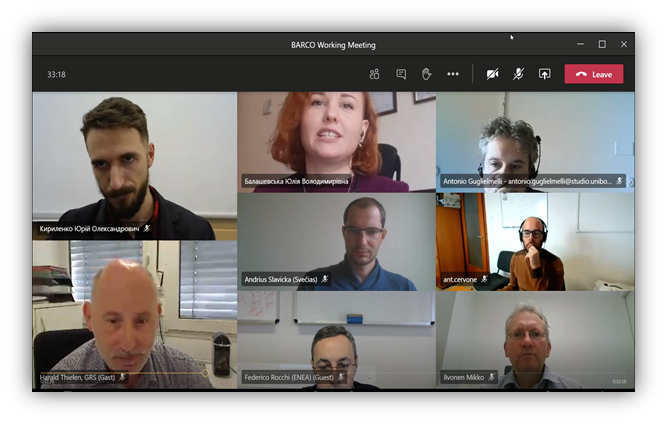Improving Modeling Accuracy and Interpretation Skills Within ETSON EP&R Community

The consequences of the radiological and nuclear emergencies may vary from an overexposure of a single person to a transboundary catastrophe with multiple victims and massive radiation contamination. In light of the effort and resources potentially involved in the mitigation, assessment of the radiological consequences during an emergency is a vital stage in the planning and response.
According to the IAEA GSR Part 7 requirements, within emergency planning zones and emergency planning distances, arrangements shall be made for the timely monitoring and assessment of contamination, radioactive releases and public exposure for the purpose of deciding on or adjusting the protective actions and other response actions that have to be taken or that are being taken.
Assessment of radiological impact is based on the calculation of the doses of exposure to individuals and population in general. In order to anticipate and arrange countermeasures, it is advisable to resort to the modeling, which predicts the transfer of radionuclides in the environment. A variety of decision-support analytical systems today provide coherent and detailed information, ranging from descriptive reports to detailed evaluations of particular countermeasures. With a number of assumptions, these tools are capable of predicting the transport of radionuclides over considerable distances, in case of transboundary emergencies.
The expertise in the assessment and forecasting of radiological consequences from country to country may vary slightly with regard to the methodological approaches, the use of models of atmospheric dispersion and dose projection, databases, calculation procedures, codes etc. Possible differences in the assessments conducted by experts in different countries and institutions can take place due to a number of different factors: such as use of different sources of information, specificities of national requirements etc. These factors need to be identified both in practice and theoretically. Hence, looking at the novel trends, actual international programs and projects such as IAEA‘s CRP J15002, EC‘s FASTNET, US NRC’s RAMP, emergency preparedness and response modelling resources are focused on harmonization of existing approaches with assessments of radiological consequences.
In light of the severity of the possible impact, the understanding of the peculiarities and limitations of various calculation codes, as well as the skills and capabilities of the decision-makers in the neighboring countries, is of utter importance.
In order to measure the performance of analytical tools, to validate models, and to facilitate the adoption of the best practices in modeling, use of benchmarking is fully justified. The benchmarking is considered as a quality management tool aimed at a comparative analysis of modeling packages for emergency preparedness and response, and an assessment of approaches to the use of modeling packages and methodologies in place.
On March 4, 2020, Benchmarking on Assessment of Radiological Consequences (BARCO) Project started. The aim of the Project is to consider an approach to benchmarking as a technique for evaluating existing gaps in the modeling, use of meteorological data and other databases by ETSON Members (TSOs to the Regulators), and approaches to the interpretation of results of model accident consequences over distance.
The project group is represented by participants from the following technical support organizations: State Scientific and Technical Center for Nuclear and radiation Safety (SSTC NRS); Italian National Agency for New Technologies, Energy and Sustainable Economic Development (ENEA); Lithuanian Energy Institute (LEI); Technical Research Centre of Finland (VTT); Gesellschaft für Anlagen- und Reaktorsicherheit (GRS) gGmbH.
Among others, objective of the Project is an evaluation of emergency preparedness and response (EP&R) radiological assessments’ robustness within the context of the ETSON Members` relevant resources and capabilities. Within the scope of this project, radiological assessment robustness involves an investigation on results of assessment collected from the different TSOs for single input data. Following the project activities the comparative analysis of the performance of EP&R calculation codes used by ETSON Members for a general scenario was carried out, as well as the approaches to the use of modeling packages and methodologies with regard to modeling, use of the databases, interpretation of results etc. were assessed.
According to BARCO policy, all participants used their own meteorological databases according to the chosen calculation code format and provided a single calculation by their own tool(s) (ARANO, VALMA, JRODOS v. 2017 Update 2 and JRODOS v. 2019, FLEXPART v10.4). During benchmarking the participating Institutions have improved their modeling accuracy and interpretation skills, deepen the understanding of the codes’ peculiarities, enhance the analytical capacities in the assessment of radiological consequences, and developed sustainable partnerships within ETSON EP&R community. Recommendations for codes users derived from the project will be also useful for all participants in improving their approaches.
During the final meeting, the participants considered the list of journals for future publications, though some additional journals can be suggested and considered by all the participants as a place to present publications on BARCO project results. As well as a paper with the result of the BARCO project is scheduled for delivery at EUROSAFE, ETSON´s annual international conference later this year.
It is expected that the results of the benchmarking will be used by ETSON Members and other organizations operating the EP&R analytical tools considered within the framework of BARCO project. Project Final report could be further used as a basis for the development of a respective Technical Safety Assessment Guide or another document, in synergy with the activities of ETSON, and be made available to the public via the ETSON website.
Tetiana Verbytska
Head of Public Relations
State Scientific and Technical Center for Nuclear and Radiation Safety (SSTC NRS)
tv_verbytska@sstc.ua